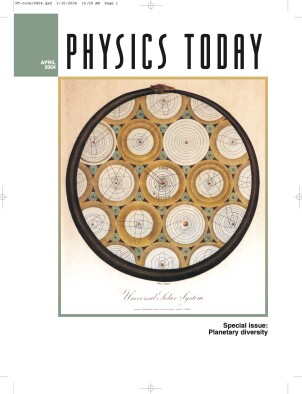US Physics Job Market Holds Steady
DOI: 10.1063/1.1752419
Employment patterns for physics and astronomy degree recipients in the US shifted little for the classes of 2000 and 2001, according to the latest report from the American Institute of Physics on recent graduates at all degree levels.
US universities conferred 1157 PhDs in physics in 2001, the seventh straight year of decline since a recent peak of 1481 in 1994. The number of astronomy PhDs granted each year has fluctuated around 120 over the same period; it was 101 in 2001. In 2000 and 2001 combined, 54% of physics PhD recipients were US citizens and 13% were women. The median time to earn a physics PhD was six years. The following employment statistics do not include the 5% of US citizens and 18% of noncitizens among the new physics PhDs who found work outside the US.
Starting salaries were up and unemployment was down for physics PhDs in the classes of 2000 and 2001. Nearly equal numbers took postdocs as took potentially permanent positions. That represents a slight shift to more postdocs, which in the past “has frequently coincided with weaker economic conditions,” the report notes. Unemployment was 2%, down from more than 5% in the mid-1990s.
University-based postdocs earned a median starting salary of $38 000 in physics and $40 000 in astronomy, while postdocs in national labs took home $48 000. In potentially permanent positions in the private sector, new physics PhDs pulled in $75 000.
Physics masters who entered the job market earned a median initial income of $55 000. The number of new physics bachelors increased in 2002, which continued the reversal of a long decline (see Physics Today, July 2002, page 28
These and other data are presented in the Initial Employment Report: Physics and Astronomy Degree Recipients of 2000 & 2001. The report may be downloaded from the Web at http://www.aip.org/statistics/trends/emptrends.htm

More about the Authors
Toni Feder. American Center for Physics, One Physics Ellipse, College Park, Maryland 20740-3842, US . tfeder@aip.org
